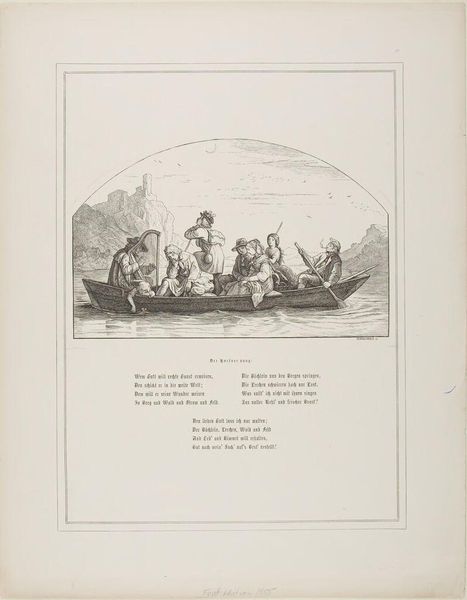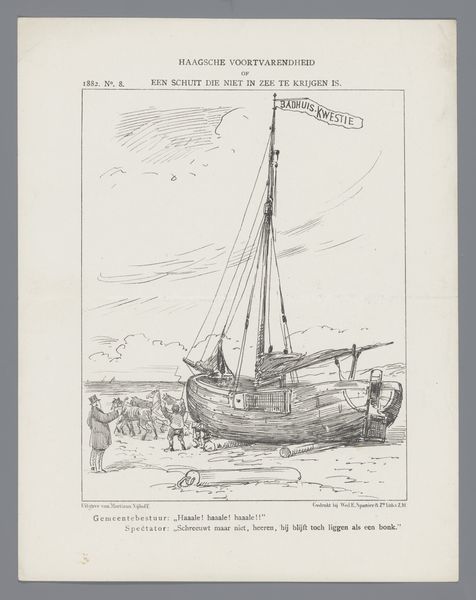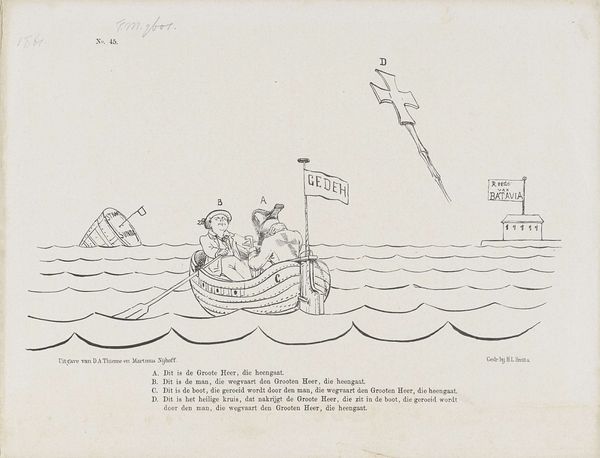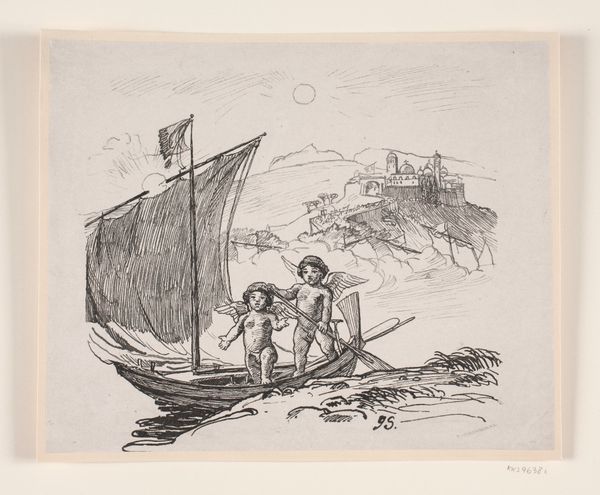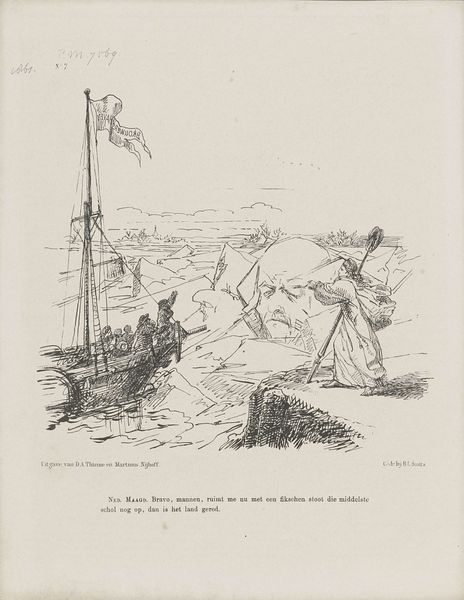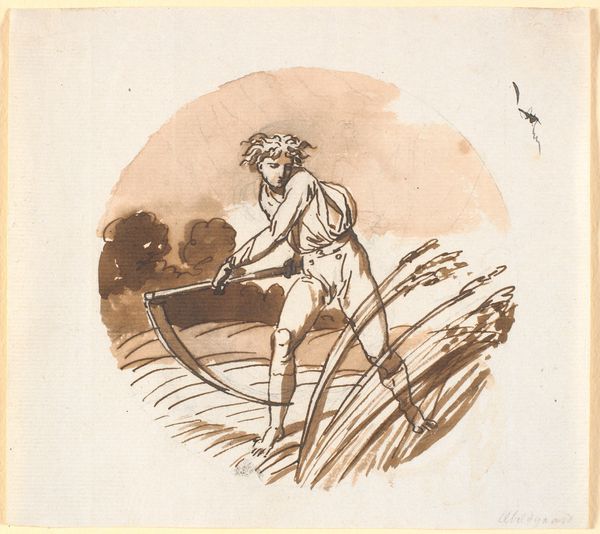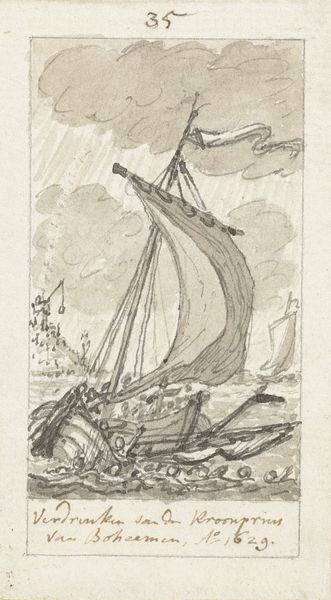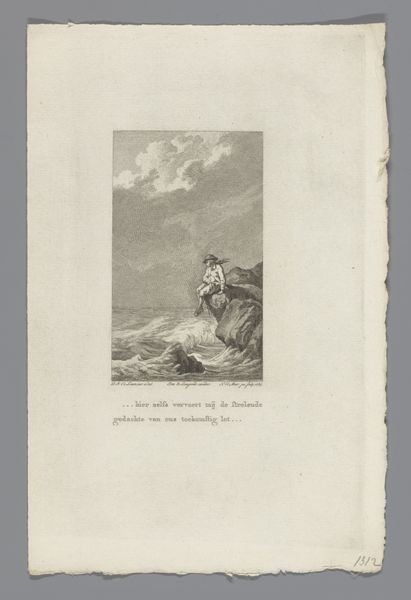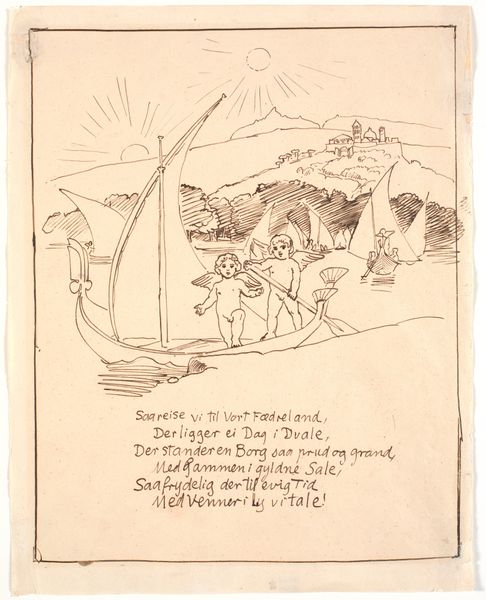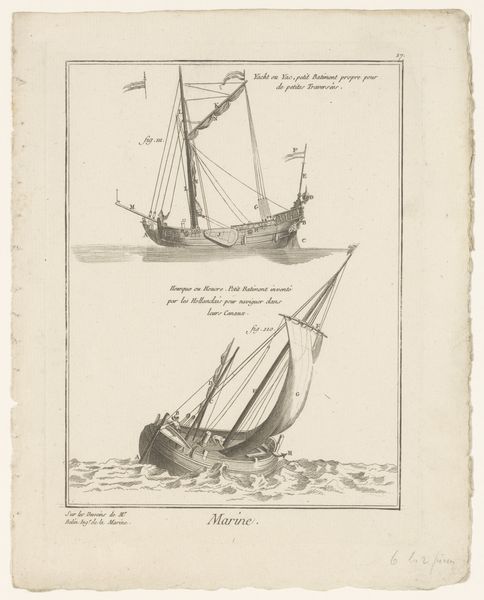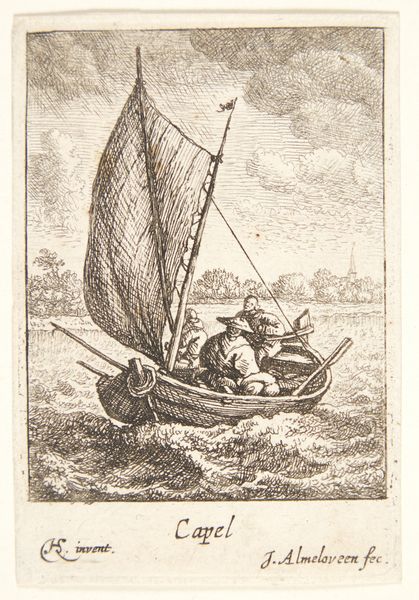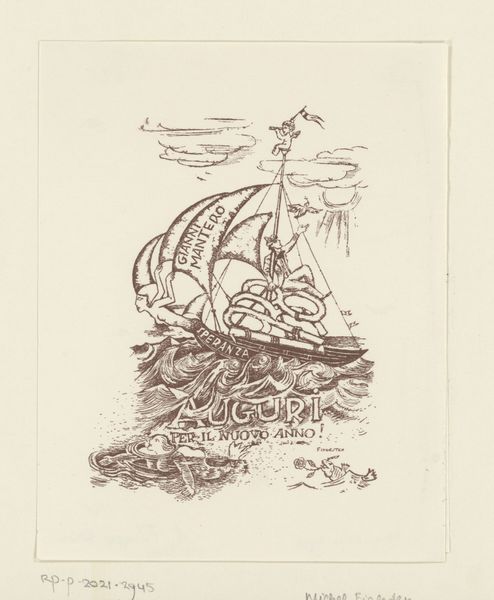
Dimensions: 342 mm (height) x 281 mm (width) (bladmaal), 249 mm (height) x 200 mm (width) (billedmaal)
Curator: Before us, we have Joakim Skovgaard's ink and paper drawing, "'Saa reise vi til vort Fædreland...'," created between 1884 and 1887. Editor: My immediate reaction is one of whimsy touched with melancholy. The delicate line work creates a dreamlike scene, but the subject feels steeped in longing. Curator: Indeed. The technical precision of the ink drawing lends itself well to a formal analysis of Skovgaard's compositional choices. Observe how he uses line weight to emphasize the foreground elements—the boat and cherubic figures—while the background landscape fades into a softer focus. The sail’s form is quite interesting. Editor: Beyond the technique, it strikes me as a powerful piece reflecting Danish Romantic nationalism during a period of complex national identity formation. Skovgaard presents an idealized vision of returning to the homeland. How do you see this idealized form manifesting formally? Curator: The repetition of the linear shapes to give order to the form provides balance, contributing to a sense of harmony. The texture creates contrast; for example, the solidity of the hull gives an anchor. Editor: But what about the inscription and the historical context? I would propose we consider how the accompanying verse serves to amplify the emotional weight of the artwork, directing viewers toward a reading centered on themes of belonging and spiritual return. What do you think about how his national pride informed this construction? Curator: It's undeniable that context enriches our interpretation, but it is just as important to consider the intrinsic elements. The semiotic arrangement conveys a powerful narrative independently. Consider the visual rhetoric, the ship with its cherubic figures steering us onward; it’s laden with metaphor! Editor: Right, I do understand, the visual elements work to express Skovgaard’s vision—but perhaps, for some viewers at the time, this imagery reinforced prevailing national myths. So a discussion of this work demands we balance formal artistic construction and national ideology. Curator: It’s been useful to reconsider this drawing. The artwork offers a fascinating lens through which to explore both the artistic language of Romanticism and its dialogue with its political time. Editor: Yes, by considering its place in Danish national art history alongside Skovgaard's creative intention, we can build a richer understanding of its visual language.
Comments
No comments
Be the first to comment and join the conversation on the ultimate creative platform.
